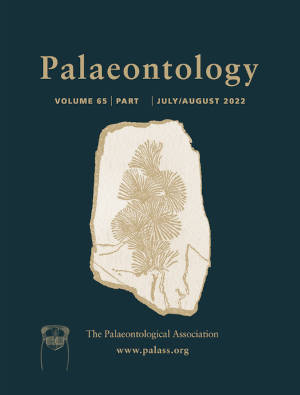Article: Eocene palaeoenvironments and palaeoceanography of areas adjacent to the Drake Passage: insights from dinoflagellate cyst analysis
Publication: Palaeontology
Volume:
65
Part:
3
Publication Date:
2022
Article number:
e12601
Author(s):
Cecilia R. Amenábar, G. Raquel Guerstein, Marta I. Alperin, Elbio D. Palma, Silvio Casadío, Alexandra Belgaburo, and Martín Rodríguez Raising
Abstract
Abstract A proper understanding of the palaeoceanographic evolution of the Drake Passage during the Palaeogene is hampered by the lack of precise tools to date and correlate the sedimentary units of areas adjacent to the region. In this work, considering recently published radiometric U–Pb dates, we revised the age of a previous dinoflagellate zones for the middle to upper Eocene units of the Austral–Magallanes Basin. The quantitative analysis of middle to late Eocene dinoflagellate cyst assemblages from different localities close to the Drake Passage allowed us to reconstruct the palaeoenvironmental conditions and the possible surface ocean currents during this time in the area. Assemblages dated between 41.3 and 38.1 Ma represent relatively warm waters in inner shelf settings, while those ranged between 36 and 35 Ma reflect coastal areas with cool, nutrient-rich surface waters. The proposed surface ocean circulation pattern, based on dinoflagellate cysts distribution between 41.3 and 38.1 Ma, agrees with the results of a palaeoclimatic numerical model simulation performed with a Drake Passage shallow opening of 100 m depth. At c. 36 Ma, several Antarctic gonyaulacacean taxa tolerant to relatively warmer waters were replaced by some Antarctic peridinacean species better adapted to colder conditions. This change could be linked to a progressive deepening of the Drake Passage that is estimated to have reached 1000 m depth promoting a cooling in the South Atlantic. Such passage depth would have enabled stronger flows from the Pacific to the Atlantic Ocean, which is reflected by the increase of cosmopolitan species.
